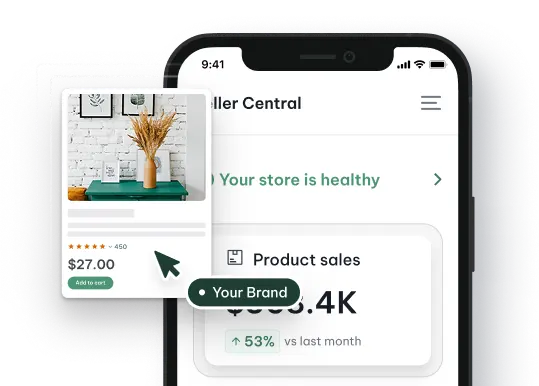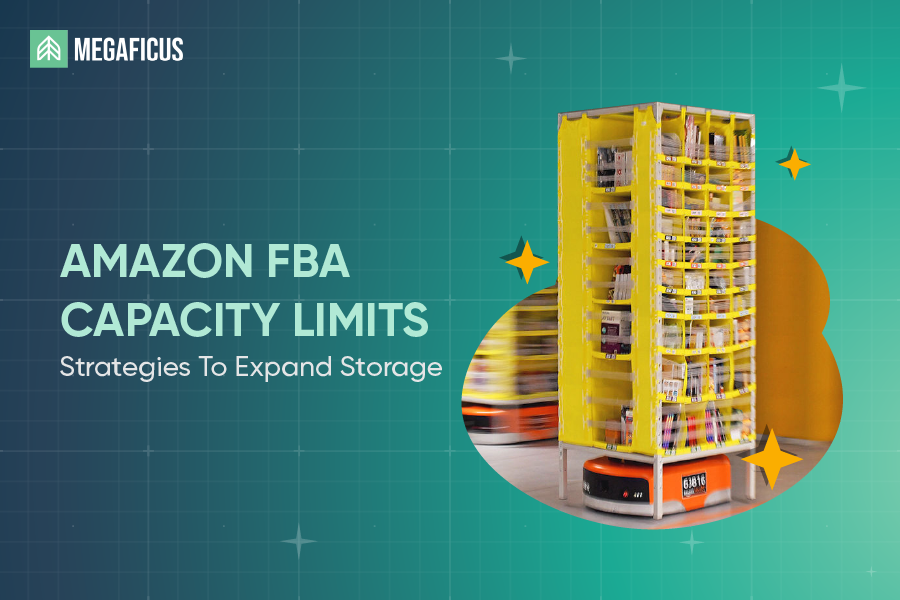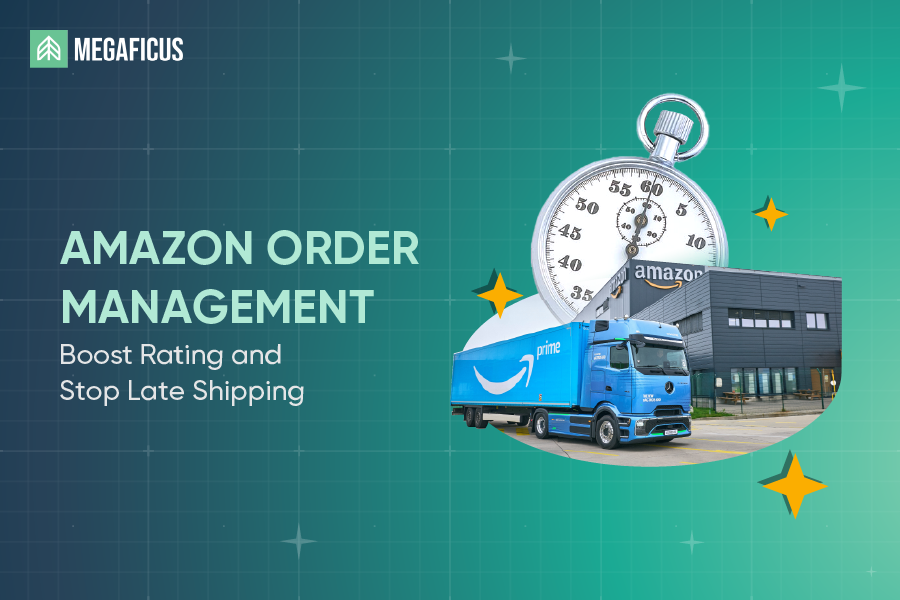Ever feel like your Amazon FBA shipping cost eats into your profits faster than expected? Whether you ship lightweight home goods or heavy electronics, understanding how Amazon FBA shipping fees are calculated and how to lower them helps you scale smarter and protect your margins, as well as stay competitive and grow your business sustainably.
Quick Summary
- Amazon FBA shipping cost: Typically ranges from $0.75 – $10.00+ per unit, depending on product size tier, weight, and shipping mode.
- Main components: Inbound freight, packaging and labeling, and storage or handling within Amazon’s fulfillment centers.
- Cost factors: Product dimensions, shipment distance, carrier choice, and seasonality all impact your total shipping fees.
- Optimization tips: Use Amazon Partnered Carriers for lower inbound rates, consolidate shipments, optimize packaging, and ship before peak seasons to avoid surcharges.
- Estimation tools: Calculate costs using the Amazon FBA Revenue Calculator, Seller Central’s Shipment Creator, or third-party tools like Helium10 and Jungle Scout.
Why Does Amazon FBA Shipping Cost Matter?
When you sell on Amazon, every cent of your shipping cost counts. Amazon FBA shipping cost refers to what sellers pay to send products to Amazon’s fulfillment centers, including packing, storage, and transportation.
Essentially, these costs determine how much it takes to get your product ready for sale on the platform. Within the larger FBA structure, shipping represents a critical piece of the puzzle, which is right next to picking, packing, and customer support.
What’s Included in Amazon FBA Shipping Cost?
Your total FBA shipping costs often combine multiple elements:
- Inbound freight fees: what you pay to send inventory to Amazon warehouses.
- Packaging and labeling: ensuring items meet FBA requirements.
- Storage and handling: based on your product’s size and turnover rate.

At the center of these expenses is the Amazon FBA inbound shipping cost, which is the amount you pay to send your products to Amazon’s warehouses. This amount varies depending on shipment weight, packaging dimensions, and whether you use Amazon’s Partnered Carrier Program (PCP) or another logistics provider.
Why It Matters?
Your shipping cost matters because it directly affects product pricing and profit margins. If you’re selling a lightweight item like phone cases, even a small increase in per-unit shipping cost can shrink your margin significantly. On the other hand, a heavy item like a blender or air fryer can quickly become unprofitable if you don’t optimize packaging and route selection.
Let’s say two sellers both list products for $20. If one spends $0.80 on shipping and the other spends $3.50, their profit difference could exceed 10-15%. Therefore, optimizing shipping efficiency keeps you agile and ensures you’re not losing ground to competitors.
In short, managing your Amazon FBA shipping cost efficiently determines whether your business grows or bleeds profit.
How Much Does Amazon FBA Shipping Cost on Average?
Before discussing the cost, you should know that there are 3 main shipping modes. Using Amazon’s Partnered Carrier Program often offers discounted inbound rates compared to third-party carriers, which may offer flexibility but often at a higher cost.
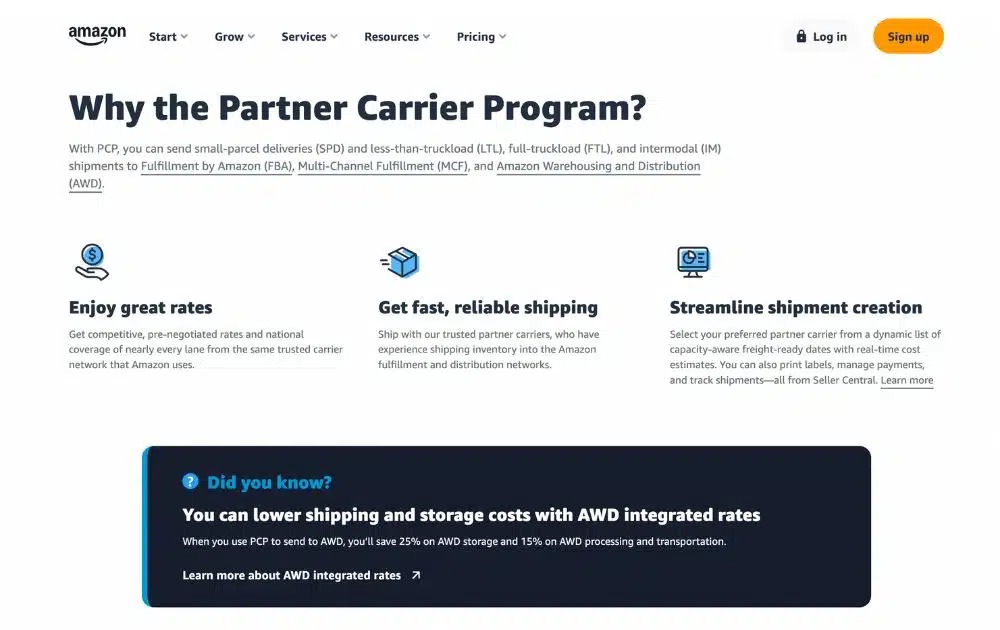
For high-volume sellers, using Amazon Global Logistics for international shipments might see higher upfront rates but gain savings in customs processing.
Shipping costs vary widely based on your product’s weight tier, category, and shipping mode. To give you a sense of what to expect, here’s a breakdown of average Amazon FBA shipping costs by size:
| Product Type | Weight/Size Tier | Estimated FBA Shipping Cost (Per Unit) |
|---|---|---|
| Small standard-size | <1 lb | $0.75 – $1.50 |
| Large standard-size | 1 – 2 lb | $1.60 – $2.80 |
| Small oversize | 2 – 20 lb | $3.00 – $6.50 |
| Large oversize | 20 – 50 lb | $6.60 – $10.00+ |
For example, there’s a seller in Los Angeles sending yoga mats to Amazon’s Moreno Valley fulfillment center via UPS Partnered Carrier. Their rate might be $2.40 per unit. Meanwhile, a seller importing the same product from Vietnam through Amazon Global Logistics could see costs around $6.20 per unit after customs and handling fees.
The key takeaway is: understanding your shipping mode and region can cut hundreds in extra costs each month.
What Factors Affect Amazon FBA Shipping Fees?
Your Amazon FBA shipping fees aren’t fixed. They shift based on several controllable (and a few unpredictable) factors. Understanding these will help you plan smarter.
1. Product Size and Weight
Product dimensions play one of the biggest roles in determining your Amazon FBA shipping cost. Larger or heavier items require more space in trucks and warehouses, which drives up both shipping and storage fees. By optimizing packaging dimensions and reducing unused space, you can often cut your costs significantly without changing the product itself.
For instance, you can reduce shipping costs by 25% by switching from bulky square boxes to slimmer rectangular ones that fit Amazon’s “standard” classification. This small change not only saves money but it also helps your shipments move through Amazon’s network more efficiently.
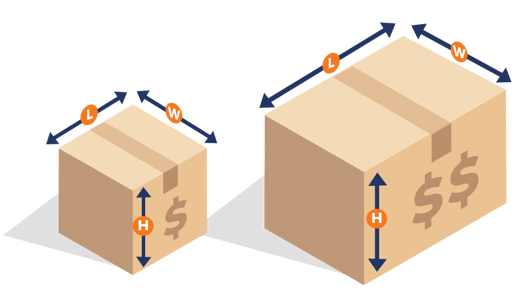
2. Shipping Distance and Destination
The distance your inventory travels significantly impacts your bottom line. The farther your goods must go to reach an Amazon fulfillment center, the higher your transportation costs will be.
Shipping across multiple, distant regions can add unnecessary miles, expenses, and fees, especially if your primary customer base is concentrated in one geographical area. This misplaced inventory directly inflates operational spending.
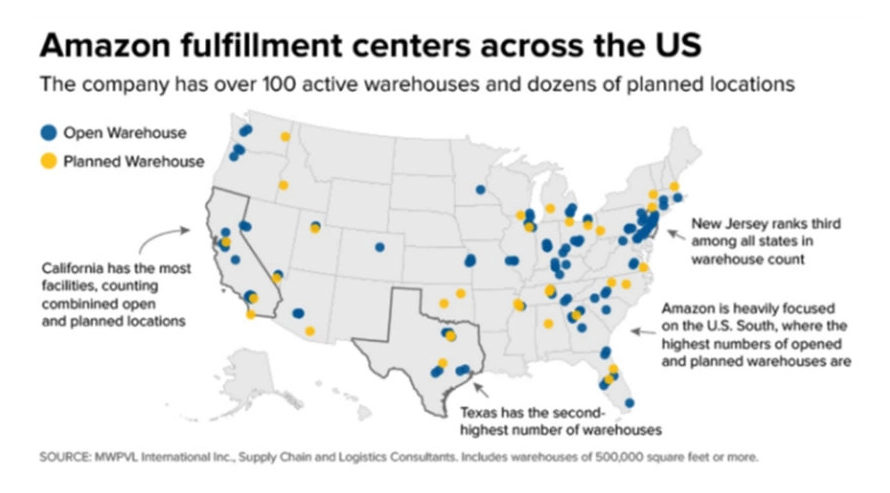
3. Packaging and Prep Requirements
Packaging and prep directly influence your Amazon FBA shipping cost because every inch of space and ounce of weight counts. Oversized boxes or unnecessary filler increase dimensional weight, while poor labeling or packaging errors can lead to reprocessing fees at Amazon’s fulfillment centers.
When your items arrive properly packed and prepped, they move through check-in faster, reducing extra handling charges and keeping your total shipping cost lower.
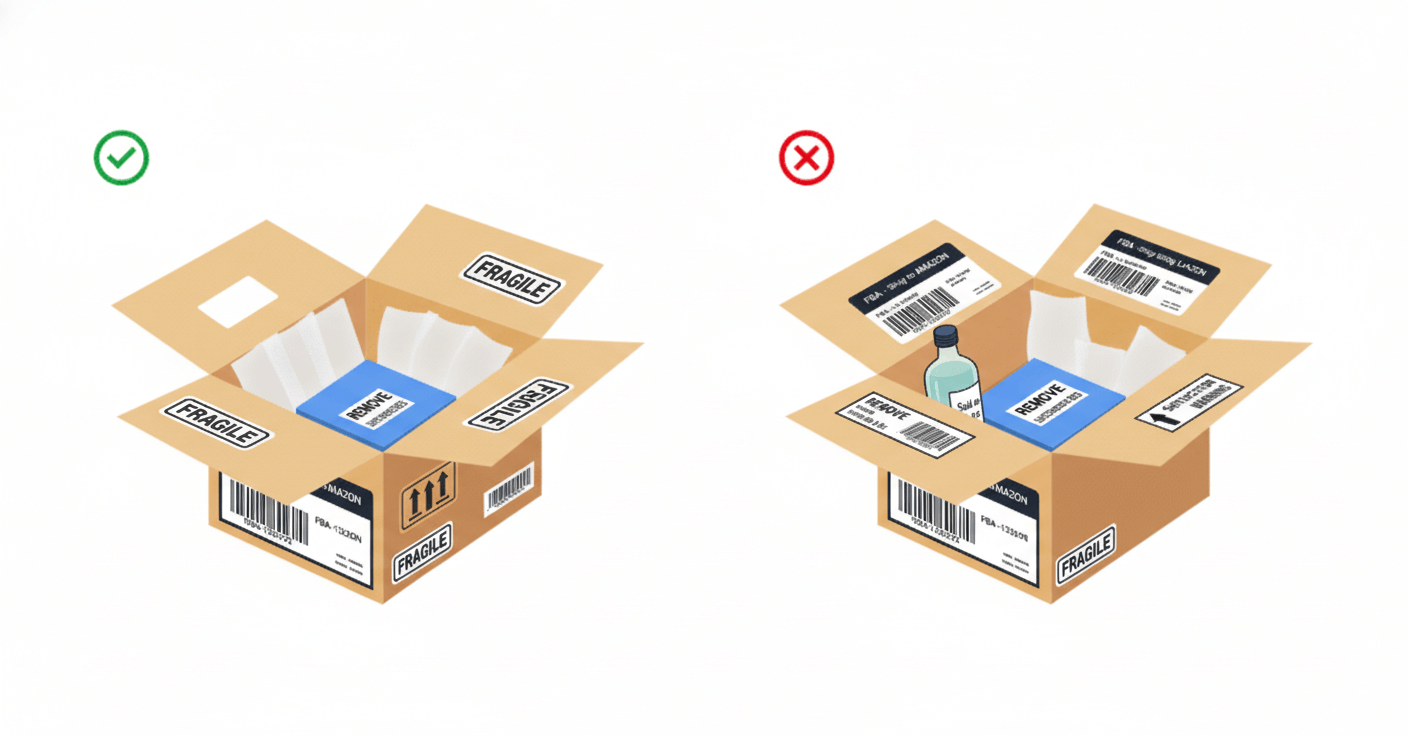
>>> Read more: Amazon FBA Packaging Rules And Guidelines For Sellers
4. Carrier Choice
Carrier selection plays a major role in shaping your Amazon FBA shipping cost. Different carriers use varying rate structures based on shipment size, delivery zones, and service speed. Choosing an option with higher surcharges or less efficient routes can quickly drive up your per-unit cost.
On the other hand, partnering with a carrier that offers bulk discounts or optimized regional coverage can noticeably lower your expenses. In short, the more strategically you match your carrier to your shipping pattern, the more control you gain over your overall FBA shipping cost.
5. Seasonality
Shipping costs aren’t static. They tend to climb during busy sales seasons. Around events like Prime Day, Black Friday, and the Q4 holiday rush, Amazon FBA shipping cost often surges as carriers manage higher order volumes and warehouse space becomes limited.
During peak demand, delays in carrier pickups or warehouse check-ins can extend storage times, leading to extra fees and slower turnover. This means sellers not only pay more to ship but also risk higher holding costs if products arrive late or miss sales windows. These spikes can quickly eat into profit margins if you don’t plan ahead.
>>> Read more: Amazon Black Friday Sale 2025: Complete Guide And Top Deals
How to Calculate Amazon FBA Shipping Cost Accurately
Accurate calculations prevent surprise deductions and keep your margins healthy. You can estimate your Amazon FBA shipping cost using a mix of Amazon’s tools and third-party calculators.
Step 1. Use the Amazon FBA Revenue Calculator
Before you ship anything, start by estimating your total costs and expected profit margin using the Amazon FBA Revenue Calculator. This free tool allows you to input your product details to see a full breakdown of potential fees.
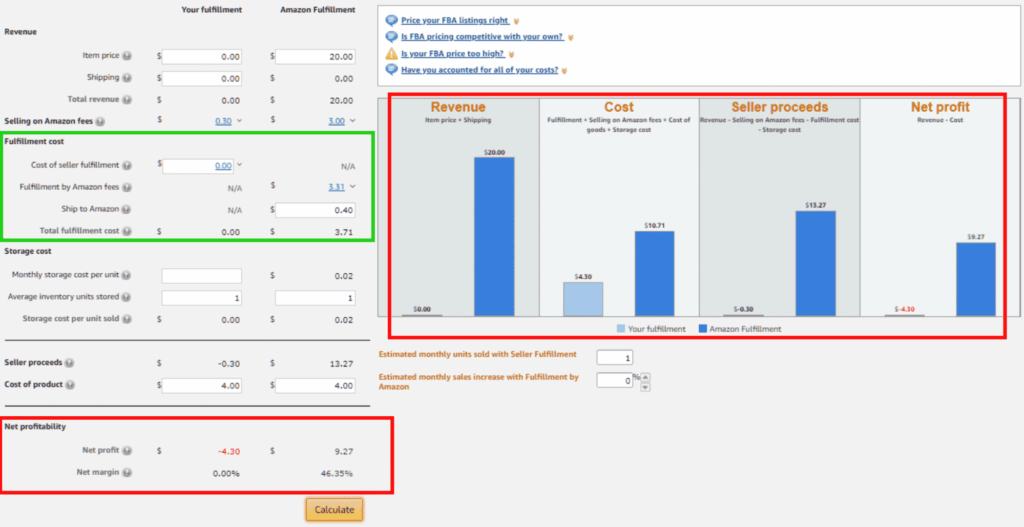
Step 2. Create a Shipment in Seller Central
After confirming profitability, move on to planning your shipment with the Shipment Creator tool inside Seller Central. You will select a carrier, enter package measurements, and choose the number of boxes in your shipment. The tool then generates an estimated cost and shipping label right away.
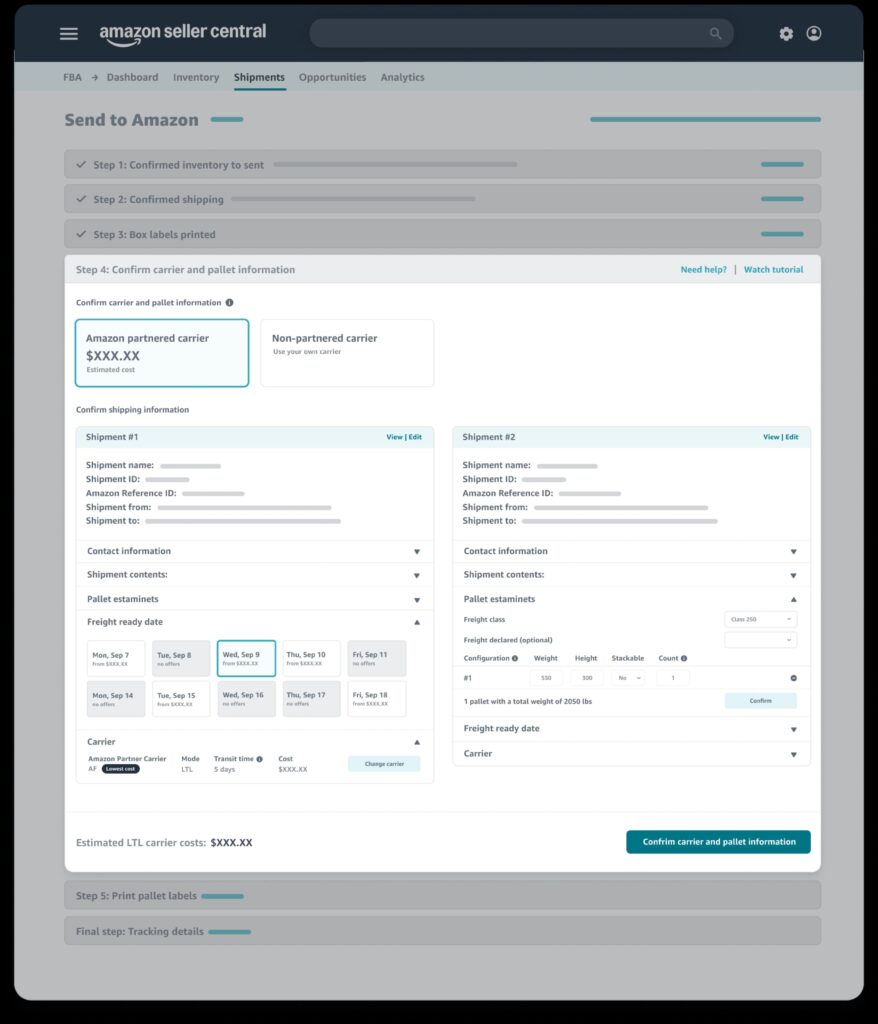
Step 3. Use Third-Party Tools for Deeper Insight
While Amazon’s built-in calculators are great for a quick estimate, third-party platforms like Helium10 and Jungle Scout give a more comprehensive financial picture. These tools include additional factors such as storage duration, labeling fees, long-term handling costs, and even fuel surcharges, which are things Amazon’s own tools may not fully account for.
By combining data from both Amazon and external tools, you can spot cost-saving opportunities and fine-tune your pricing strategy before shipping your products.
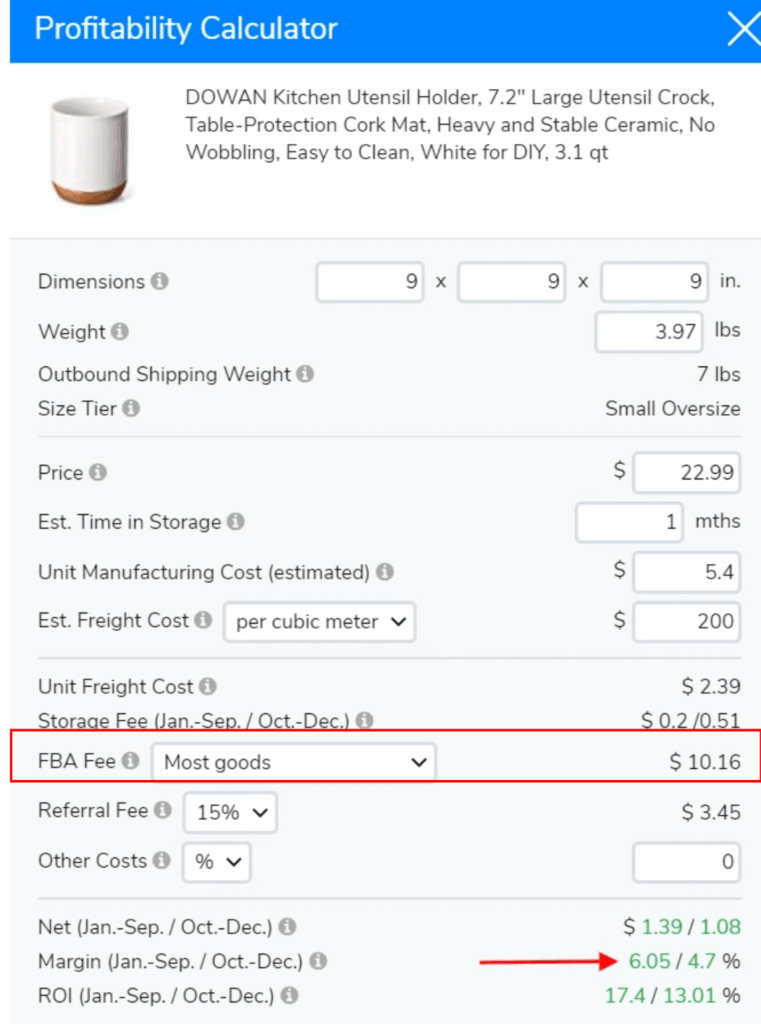
Let’s walk through a simple example so you can see how these tools come together in practice.
Imagine you’re shipping a box of 10 bulk-scented candle sets to an Amazon fulfillment center in Texas:
- Package size: 18 × 14 × 10 inches
- Total weight: 10 lbs
- Carrier: UPS Partnered (through Amazon)
- Estimated total shipping cost: $7.80
That means your inbound shipping cost per unit is roughly $0.78. However, before confirming the shipment, double-check for hidden fees like fuel surcharges, labeling costs, or special handling charges because these small additions can quietly increase your total expenses if overlooked.
How to Reduce Your Amazon FBA Shipping Cost
Now the part from Megaficus every seller loves: saving money! Reducing your Amazon FBA shipping cost is about being smart, which is not necessarily about spending less but spending better. Small improvements in how you pack, plan, and ship can turn into serious savings over time.
1. Use Amazon Partnered Carriers
Amazon’s Partnered Carrier Program is a built-in shipping service that helps sellers move inventory to Amazon fulfillment centers at discounted rates. Instead of managing separate carrier accounts, you can select this option directly in Seller Central when creating a shipment.
Amazon works with trusted carriers like UPS, FedEx, and DHL, giving you access to their logistics networks at 20-40% lower rates than most third-party providers. Once you confirm your shipment details, Amazon automatically generates the shipping labels, handles the billing, and links tracking updates to your Seller Central dashboard through the Order ID.

Because these carriers are fully integrated with Amazon’s inbound process, your packages are more likely to meet FBA compliance standards and reach fulfillment centers on schedule. This makes the Partnered Carrier Program especially useful for small and medium sellers who ship regularly but want to keep their costs low and predictable.
2. Consolidate Shipments
Instead of sending multiple small boxes each week, try consolidating your shipments into fewer, larger loads. Doing this helps reduce your per-unit shipping cost, minimizes packaging waste, and gives you access to bulk rate discounts from carriers.
For example, if you currently send weekly shipments, switching to a biweekly or monthly schedule could cut logistics costs by up to 15%. Just be sure to balance consolidation with inventory availability so you can avoid stockouts while still optimizing for efficiency.
3. Choose Fulfillment Centers Strategically
Where your inventory lands in Amazon’s network directly impacts your overall Amazon FBA shipping costs. Sending products to fulfillment centers that are closer to your target customers shortens transportation routes, reduces fuel surcharges, and speeds up delivery.
You can use Amazon’s Inventory Placement Service or the FBA inventory placement tools to plan shipments to the most strategic locations. For instance, if most of your orders come from the East Coast, it makes little sense to send stock to California first. Aligning your warehouse choices with customer demand helps lower your shipping spend and improve delivery times.
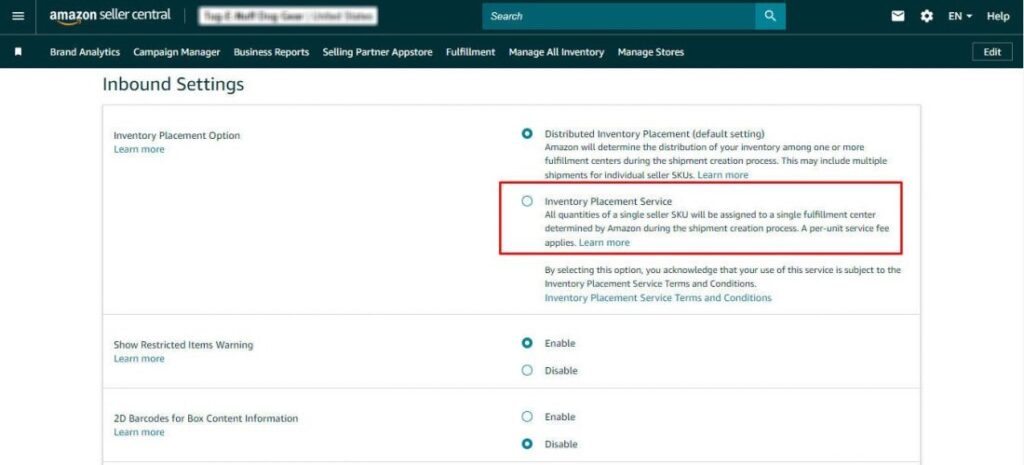
4. Optimize Packaging
Packaging is one of the easiest and most overlooked ways to cut costs. Every extra inch of unused space inside a box increases your shipping and storage fees. Using right-sized boxes and lightweight filler materials can make a noticeable difference in your total Amazon FBA shipping cost.
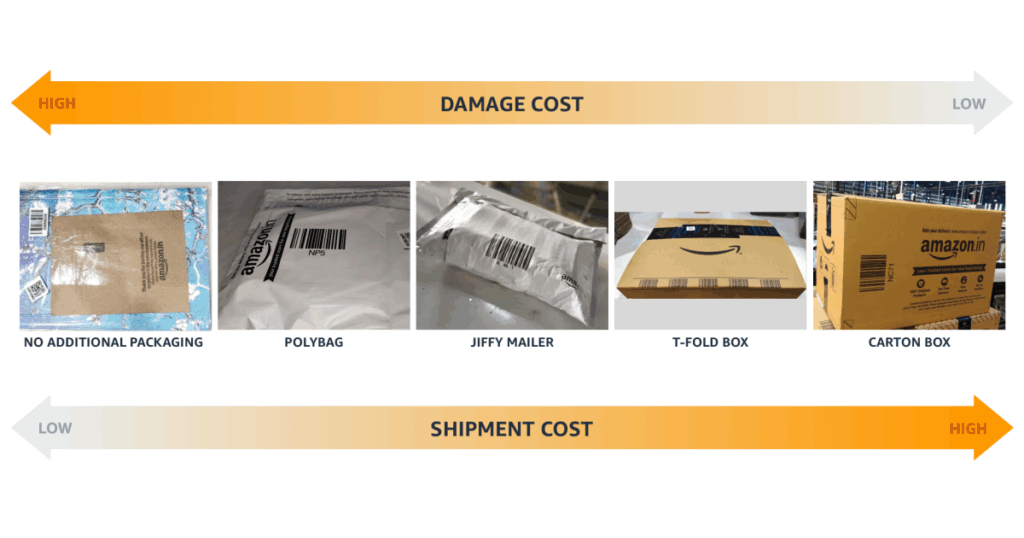
Work with your supplier or prep center to measure your products and design packaging that fits tightly without risking damage. We suggest you should reduce the box size by even one inch so that you can even save 10 – 20% in dimensional weight charges, which adds up significantly over time.
5. Work with Prep Centers Near Fulfillment Facilities
Partnering with an experienced prep center close to major Amazon hubs can save both time and money. These centers take care of labeling, poly bagging, and carton configuration to ensure your inventory meets Amazon’s strict FBA requirements.
Because they’re located near fulfillment centers, your goods spend less time in transit, which helps lower your shipping fees. Plus, properly prepped shipments move through Amazon’s receiving process faster, reducing check-in delays and keeping your inventory live for sale.
Below are some reputable and reliable prep centers we suggest for your best preparation. Note that the order number is random and doesn’t rank the quality of all centers:
| Prep Center | Location / Notes |
|---|---|
| AMZ Prep | USA & Canada, full-service Amazon FBA prep |
| YYZ Prep | Toronto-based, serves Amazon.com & Amazon.ca |
| LBOE Prep | Colorado, specializes in Amazon FBA/enhanced logistics |
| PrepFBA | California, Amazon-focused, small-batch friendly |
| California FBA Prep Service | California based, media/category specialist |
| Prep It! Pack It! Ship It! | West-Coast veteran, multi-channel focus |
| MyPrepCenter | Michigan, central USA, customized packaging solutions |
| Prep Ninjas | Oregon, family-owned, service-oriented |
| Little Owl Prep | Ohio, omni-channel logistics with Amazon focus |
| WestFBA | USA & imports, large-scale import & international prep |
| Atlantic Fulfillment | North Carolina, turnkey Amazon prep & fulfillment |
| Pacific Prep Services | Oregon, omni-channel with strong Amazon prep service |
| ShipHype | Florida & Canada, tech-enabled, works with brands |
| Red Stag Fulfillment | Tennessee & multi-US hubs, specializes in large/bulky |
Hidden Traps That Increase Amazon FBA Shipping Fees
Even seasoned FBA sellers can unknowingly lose profit to small, overlooked mistakes. From using the wrong box size to ignoring Amazon’s dimensional weight rules, these hidden traps can quietly inflate your Amazon FBA shipping fees and eat into your margins.
| Trap | Impact | Solution |
|---|---|---|
| Overpacking/Oversized Boxes | Higher-dimensional weight | Use snug packaging and audit carton sizes monthly |
| Wrong Fulfillment Center | Increased route costs | Review shipment plans before finalizing |
| Ignoring Dimensional Weight | Paying for space, not weight | Learn how volumetric pricing works |
| Skipping Rate Checks | Missed discounts | Recheck Partnered Carrier rates regularly |
Avoiding these traps isn’t something you fix once and forget. Build a regular habit of reviewing your shipment reports in Seller Central, tracking any cost changes, and adjusting your packaging or routing plans. Staying consistent with these checks helps you prevent small mistakes from turning into expensive surprises.
Frequently Asked Questions About Amazon FBA Shipping Cost
It covers packing, inbound transportation, storage, and fulfillment charges.
Usually between $0.30 and $1.00, depending on weight and carrier type.
No, they vary by size tier, category, and distance to the fulfillment center.
Sometimes. But Amazon Partnered Carriers typically offer the best rates.
Yes. Just open a case with Seller Support and provide proof of miscalculation.
Get Professional Help from Megaficus
Understanding your Amazon FBA shipping cost is about making informed decisions that strengthen your business. When you keep a close eye on your costs, use the suitable carriers, and continuously optimize your packaging, fulfillment routes, and shipment timing, you protect your profit margins and build a more efficient operation over time.
A clear grasp of your shipping data also helps you price products competitively, forecast expenses accurately, and stay prepared for seasonal fluctuations. Many top sellers treat shipping analysis as part of their monthly strategy review, not just an afterthought.
Take a few minutes today to review your shipping history in Seller Central, identify your biggest cost drivers, and make one change that could lower your next shipment bill.


